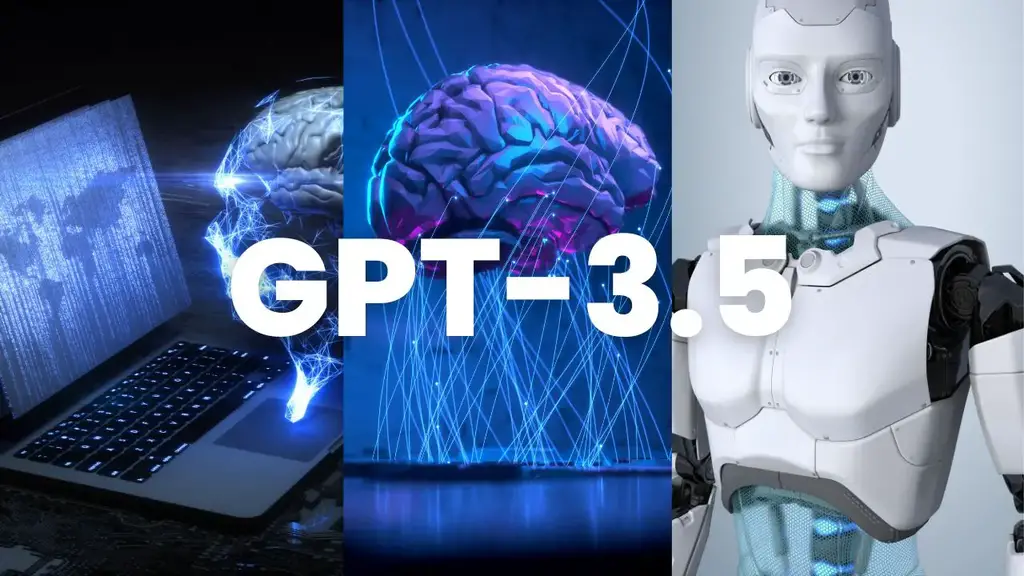GPT-3.5 represents an important stepping-stone in the development of OpenAI’s Generative Pretrained Transformers, or Chat GPT series. It is an artificial intelligence (AI) language model, a program that uses machine learning to generate human-like text. It can answer questions, write essays, summarize texts, and even translate languages.
What is GPT-3.5?
GPT-3.5 is a large language model (LLM) chatbot developed by OpenAI. It is a successor to the GPT-3 model, which was released in 2020. GPT-3.5 is trained on a massive dataset of text and code, and it is able to generate text, translate languages, write different kinds of creative content, and answer your questions in an informative way.
GPT-3.5 is still under development, but it has already learned to perform many kinds of tasks, including:
- Generating text: GPT-3.5 can generate text in a variety of styles, including news articles, fiction, and poetry. It can also generate code, scripts, musical pieces, emails, letters, etc.
- Translating languages: GPT-3.5 can translate languages with high accuracy. It can translate over 100 languages, including English, French, German, Spanish, Chinese, Japanese, and Korean.
- Writing different kinds of creative content: GPT-3.5 can write different kinds of creative content, such as poems, code, scripts, musical pieces, emails, letters, etc. It can also help you brainstorm ideas, improve your writing style, and catch errors.
- Answering your questions in an informative way: GPT-3.5 can answer your questions in an informative way, even if they are open-ended, challenging, or strange. It can access and process information from the real world through Google Search and keep its response consistent with search results.
GPT-3.5 is a powerful tool that can be used for a variety of purposes. It is still under development, but it has already learned to perform many kinds of tasks. As it continues to develop, it is likely to become even more powerful and versatile.
How to use GPT-3.5
GPT-3.5 is available through the OpenAI API. To use it, you will need to create an account and sign up for a subscription. Once you have done that, you can use the API to generate text, translate languages, write different kinds of creative content, and answer your questions.
Here are some examples of how you can use GPT-3.5:
- Generating text: You can use GPT-3.5 to generate text for a variety of purposes, including blog posts, articles, social media posts, and even creative writing. It can also be used to help you brainstorm ideas, improve your writing style, and catch errors.
- Translating languages: You can use GPT-3.5 to translate languages with high accuracy. It can translate over 100 languages, including English, French, German, Spanish, Chinese, Japanese, and Korean.
- Writing different kinds of creative content: GPT-3.5 can write different kinds of creative content, such as poems, code, scripts, musical pieces, emails, letters, etc. It can also help you brainstorm ideas, improve your writing style, and catch errors.
- Answering your questions in an informative way: GPT-3.5 can answer your questions in an informative way, even if they are open-ended, challenging, or strange. It can access and process information from the real world through Google Search and keep its response consistent with search results.
GPT-3.5: An Interim Update
The naming convention of GPT-3.5 suggests an interim update between the GPT-3 and the awaited GPT-4. With each new iteration of the GPT models, OpenAI has been improving upon its capabilities, addressing previous shortcomings and expanding its potential uses.
Although there are no specific details about GPT-3.5 available up until my knowledge cutoff in September 2021, we can speculate that GPT-3.5 would likely offer improved performance, a better understanding of nuanced prompts, and possibly even the ability to handle more extensive conversations compared to GPT-3.
The Evolution of GPT
To better understand GPT-3.5, let’s briefly consider the evolution of the GPT series. GPT-1, released by OpenAI in 2018, was an early transformer-based language model that demonstrated the power of unsupervised learning. It was trained on books, websites, and other internet texts.
GPT-2, released in 2019, greatly expanded on the original model with a whopping 1.5 billion parameters. It showed marked improvements in coherence and the ability to generate contextually relevant text over extended passages.
In 2020, OpenAI released GPT-3, the third iteration of the model, with an unprecedented 175 billion parameters. It was capable of producing impressively human-like text, answering complex questions, writing creative stories, and even rudimentary code generation.
With the supposed introduction of GPT-3.5, we can anticipate further improvements over GPT-3 in terms of coherence, comprehension, and creativity.
Applications of GPT-3.5
The exact applications of GPT-3.5 would depend on the specific improvements and capabilities introduced with the update. However, building on the uses of its predecessors, we can expect that GPT-3.5 could be utilized for a broad range of tasks, such as:
- Content Creation: From blog posts to creative writing and poetry, GPT models can generate a wide variety of textual content.
- Education: They can assist in tutoring students in various subjects, offering explanations, and answering questions.
- Coding: If the capabilities seen in GPT-3 are enhanced, GPT-3.5 could assist developers by generating more complex code snippets.
- Customer Service: The models can be deployed in chatbots to help answer customer queries, offer product recommendations, and provide tech support.
- Language Translation: If the multilingual capabilities of GPT-3 are expanded, GPT-3.5 might offer more accurate translations.
- Gaming: With more extended dialogue capabilities, GPT-3.5 could be used to create dynamic, interactive narratives in video games.
Conclusion
As AI continues to evolve and improve, models like GPT-3.5 are likely to play an increasingly integral role in various domains. From content creation to customer service, education to gaming, the applications are seemingly endless. It’s a testament to the immense potential of AI and a glimpse of what the future holds in the realm of machine learning and artificial intelligence.
Read Also: Is Chat GPT Free?

